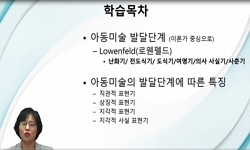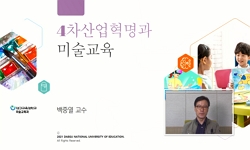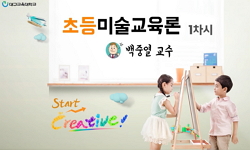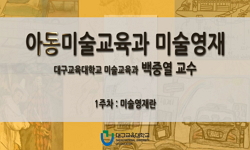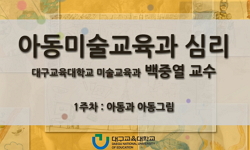In the current age of industrialization, the youth are forced to face lots of problems due to loss of humanity and do-humanization. Specifically, the juvenile problems can be defined as the cultural deficiency. These are serious problems to the youth ...
http://chineseinput.net/에서 pinyin(병음)방식으로 중국어를 변환할 수 있습니다.
변환된 중국어를 복사하여 사용하시면 됩니다.
- 中文 을 입력하시려면 zhongwen을 입력하시고 space를누르시면됩니다.
- 北京 을 입력하시려면 beijing을 입력하시고 space를 누르시면 됩니다.
청소년을 위한 미술관교육프로그램과 향후 개선방안에 관한 연구 = (A) Study on the Improvement Plans and Art Education program of museum for Adolescents
한글로보기https://www.riss.kr/link?id=T9372817
- 저자
-
발행사항
광주 : 조선대학교 교육대학원, 2004
-
학위논문사항
학위논문(석사) -- 조선대학교 교육대학원 , 미술교육전공 , 2004. 2
-
발행연도
2004
-
작성언어
한국어
- 주제어
-
KDC
376.46 판사항(4)
-
DDC
707 판사항(21)
-
발행국(도시)
광주
-
형태사항
v, 75p. ; 26cm .
-
일반주기명
참고문헌: p. 73-75
- 소장기관
-
0
상세조회 -
0
다운로드
부가정보
다국어 초록 (Multilingual Abstract)
However, there aren't many cultural areas if which the youth can form their own culture and acquire the cultural knowledge. If art museums work as a field of art and cultural exchange and support the young, they can help their proper growth through art and culture.
The education of art museums has a great meaning in that it complements the school education and provides balanced opportunities of art education. However, there are few art education programs provided for the young in art museums in Korea.
This study aimed to present improvement plans to promote further development of the educational programs provided in art museums. For the purpose, it examined and analysed the present condition of art education for the young and its programs provided in art galleries and museums. Based on the study, the results were as follows:
First, a focus should be given on nurturing of museum professionals to lead art museums to be a field of learning through experiences.
Second, for activation of education provided through art museums, a general curriculum through which art class at school is complementarily adjusted should be presented.
Third, for effective education provided through art museums, the museums should be equipped with advanced audio-vidual instruments and teaching aids.
Forth, art museums should provide a variety of learning programs through experiences such as participation in music concerts, seminars and movie watching for the young. Through the programs, the young become familiar with the museums.
Fifth, art museum educational programs to use regional cultural areas should be developed.
Sixth, to keep up with the trend of the age of information and communication, art museum home pages should be presented on-line. They are able to attract great attention from the young.
To sum up, art museum education should be linked with school education through development of a variety of educational programs and presentation of effective teaching methods and educational models. Therefore, the young will be familar with and feel emotionally stable if the education.
For active art museum education, educational staff in museums and schools should cooperate each other to prepare educational programs linked with school curriculum, and art teachers should acquire new knowledge and information for education, and put their best efforts to develop effective teaching methods.
In the current age of industrialization, the youth are forced to face lots of problems due to loss of humanity and do-humanization. Specifically, the juvenile problems can be defined as the cultural deficiency. These are serious problems to the youth who are sensitive and have strong desires.
However, there aren't many cultural areas if which the youth can form their own culture and acquire the cultural knowledge. If art museums work as a field of art and cultural exchange and support the young, they can help their proper growth through art and culture.
The education of art museums has a great meaning in that it complements the school education and provides balanced opportunities of art education. However, there are few art education programs provided for the young in art museums in Korea.
This study aimed to present improvement plans to promote further development of the educational programs provided in art museums. For the purpose, it examined and analysed the present condition of art education for the young and its programs provided in art galleries and museums. Based on the study, the results were as follows:
First, a focus should be given on nurturing of museum professionals to lead art museums to be a field of learning through experiences.
Second, for activation of education provided through art museums, a general curriculum through which art class at school is complementarily adjusted should be presented.
Third, for effective education provided through art museums, the museums should be equipped with advanced audio-vidual instruments and teaching aids.
Forth, art museums should provide a variety of learning programs through experiences such as participation in music concerts, seminars and movie watching for the young. Through the programs, the young become familiar with the museums.
Fifth, art museum educational programs to use regional cultural areas should be developed.
Sixth, to keep up with the trend of the age of information and communication, art museum home pages should be presented on-line. They are able to attract great attention from the young.
To sum up, art museum education should be linked with school education through development of a variety of educational programs and presentation of effective teaching methods and educational models. Therefore, the young will be familar with and feel emotionally stable if the education.
For active art museum education, educational staff in museums and schools should cooperate each other to prepare educational programs linked with school curriculum, and art teachers should acquire new knowledge and information for education, and put their best efforts to develop effective teaching methods.
목차 (Table of Contents)
- 목차 = ⅰ
- 표목차 = ⅲ
- ABSTRACT = ⅳ
- Ⅰ. 서론 = 1
- A. 연구의 목적 = 1
- 목차 = ⅰ
- 표목차 = ⅲ
- ABSTRACT = ⅳ
- Ⅰ. 서론 = 1
- A. 연구의 목적 = 1
- B. 연구 내용 및 방법 = 3
- Ⅱ. 본론 = 4
- A. 미술관 교육과 청소년 미술교육 = 4
- 1. 미술관 교육 = 4
- 1) 미술관 교육의 의미 = 4
- 2) 미술관의 교육적 기능 = 5
- 3) 미술관 교육의 중요성 = 8
- 2. 청소년 미술교육 = 9
- 1) 청소년기의 의미와 특징 = 9
- 2) 청소년미술의 특성 = 13
- 3) 청소년을 위한 미술관교육 = 15
- B. 우리나라 청소년미술교육 및 미술관 교육현황과 과제 = 18
- 1. 우리나라 청소년미술교육의 실태와 과제 = 18
- 1) 중ㆍ고등학생의 미 술관관람 현황조사 = 18
- 2) 중ㆍ고등학생의 미술교육에 대한 인식과 역할에 관한 조사 = 27
- 3) 청소년 미술교육 과제 = 32
- 2. 우리나라 청소년 미술관교육 현황과 문제점 = 34
- 1) 청소년 대상 미술관 교육 현황 = 34
- 2) 미술관교육의 문제점 = 52
- 3) 미술관을 통한 청소년 미술교육의 과제 = 53
- C. 청소년을 위한 미술관교육프로그램 개선방안 = 55
- 1. 미술관교육프로그램 = 55
- 1) 교육프로그램의 개발 = 55
- 2) 미술교육담당자의 역할 = 55
- 3) 교육프로그램 교수방법 = 57
- 2. 미술관교육을 위한 효과적인 매체와 방법 = 59
- 1) 전시매체의 방법 = 59
- 2) 우리나라 전시교육의 매체 = 61
- 3) 정보화시대 미술관교육매체의 매체 = 62
- 3. 지역사화와의 연계프로그램 = 63
- 1) 찾아가는 미술관 = 63
- 2) 지역 문화공간의 활용 = 64
- 4. 학교교육과 연계 프로그램 = 65
- Ⅲ. 결론 = 68
- 청소년 미술교육의 실태에 관한 설문조사 = 71
- 참고문헌 = 73





